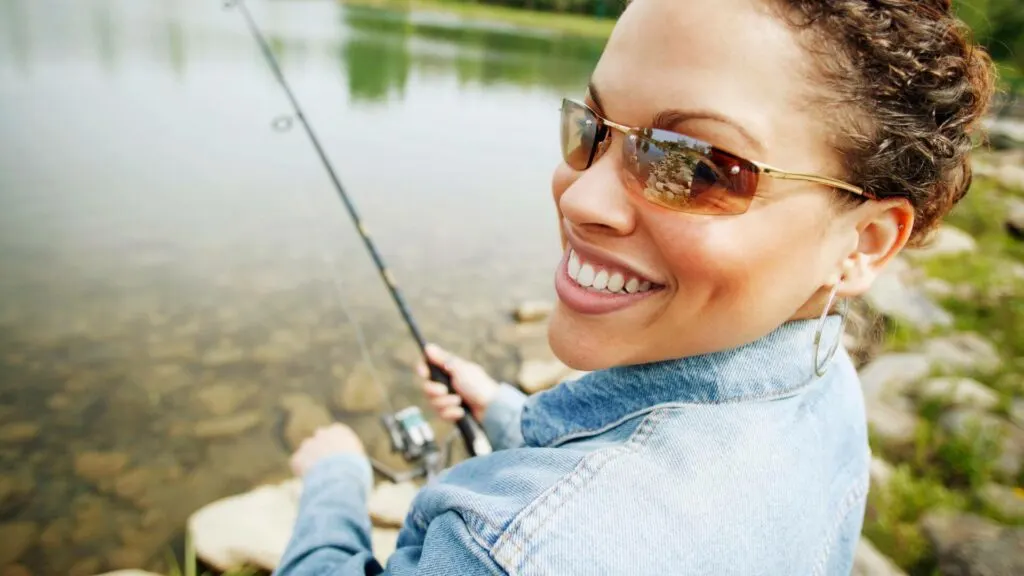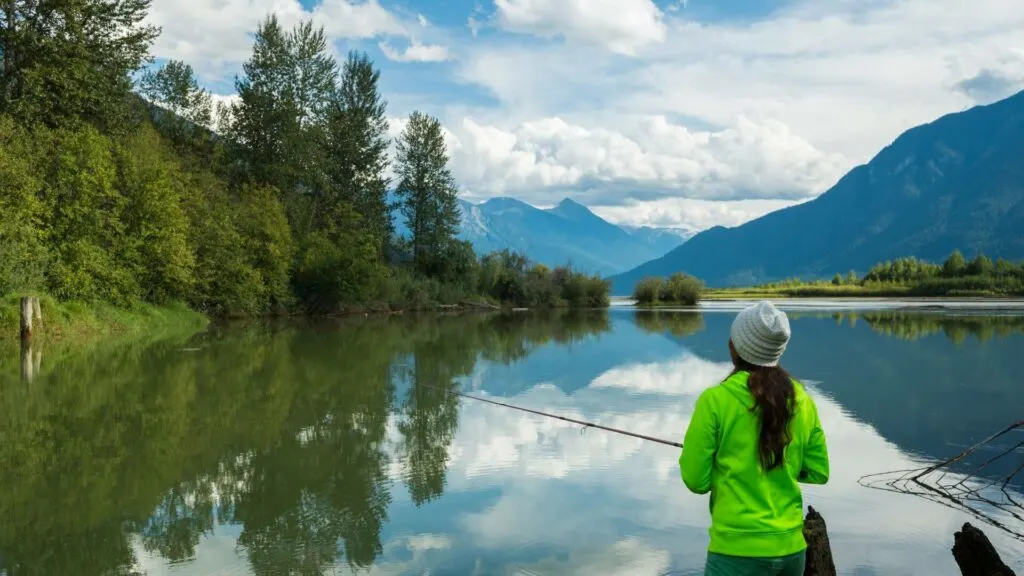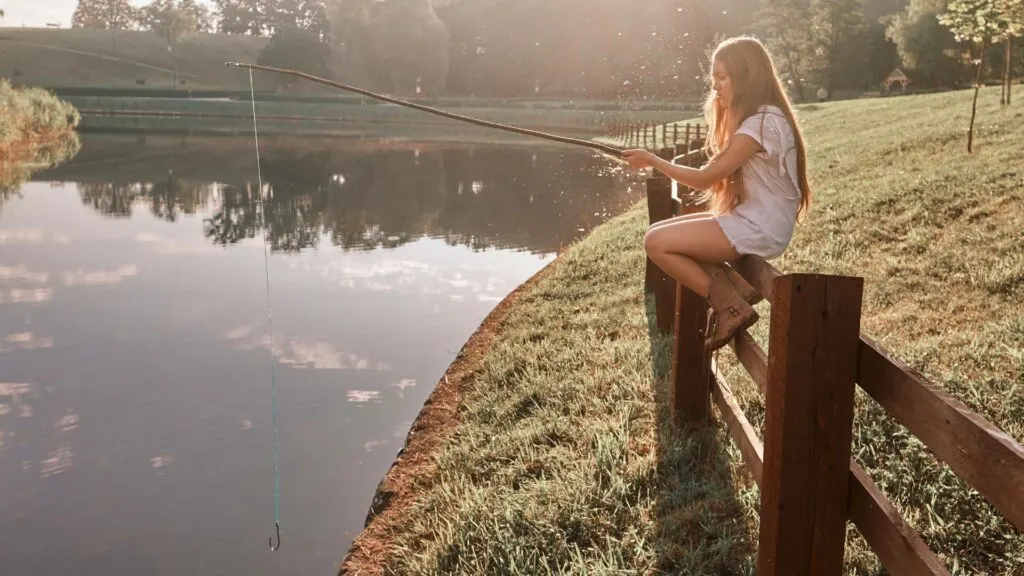Fishing is a timeless and rewarding outdoor activity that allows you to connect with nature and provide yourself with fresh, delicious seafood. Whether you’re a beginner looking to try fishing for the first time or someone with some experience but aiming to fish solo, this comprehensive guide will walk you through everything you need to know to get started. It’ll cover the essential gear, basic techniques, safety considerations, and tips for a successful and enjoyable fishing adventure.

Selecting the Right Fishing Gear
Before heading out to your chosen fishing spot, you must assemble the appropriate fishing gear. Here’s a breakdown of the essential equipment you’ll need:
- Fishing Rod and Reel: The first and most crucial equipment is a fishing rod and reel. There are various types and sizes of fishing reels and rods, each designed for specific types of fishing. A medium-weight spinning rod and reel combo is a versatile choice for beginners. It’s easy to use and can handle many fish species.
- Fishing Line: The fishing line connects your bait or lure to the reel. The Monofilament line is a good choice for beginners due to its versatility and forgiveness. The line’s strength should suit the fish species you plan to target.
- Hooks: Hooks come in various sizes and styles, depending on the type of bait or lure you’re using and the fish you’re targeting. Carry a selection of hooks in your tackle box to adapt to different fishing conditions.
- Bait: Bait can be live (like worms or minnows) or artificial (like plastic lures). The right bait depends on the type of fish you want to catch and personal preferences. Research the preferences of your target fish to select the right bait.
- Tackle Box: A tackle box is essential to organize and store your fishing gear, hooks, lures, and other accessories. It keeps everything in one place and makes finding what you need while on the water easier.
- Fishing Accessories: Don’t forget to bring essential accessories like a fishing hat, sunglasses, sunscreen, and a cooler with snacks and drinks. These items contribute to your comfort and safety during your fishing trip.

Understanding Basic Fishing Techniques
Once your gear is ready, it’s time to learn some basic fishing techniques to help you catch fish more effectively. Casting is the act of propelling your bait or lure into the water. Practice your casting skills to achieve accuracy and distance. Casting can be done from the shore, a dock, or a boat. Depending on your choice of bait, you’ll need to learn how to attach it to the hook properly. For live bait like worms, thread them onto the hook securely. For lures, ensure they are correctly connected to mimic the movement of real prey. It’s time to set the hook when you feel a bite or see your line move. Timing is crucial to prevent the fish from escaping. After hooking a fish, use the reel to bring it in. Maintain steady pressure on the fish while reeling to avoid letting it break free.
Choosing the Right Fishing Spot
Selecting the right fishing location is vital for a successful fishing trip. Start by researching local fishing spots. Online forums, fishing guides, and local fishing shops can provide incredible insights into the best places to fish in your area. Different fish species are more active during specific seasons. Research the best time of year to target your desired fish species and adjust your plans accordingly. Ensure that you have legal access to your chosen fishing location and know the area’s fishing regulations and size limits. Violating fishing regulations can result in fines.
Safety Considerations
Safety should always be a top priority when fishing alone. Check the weather forecast before heading out. Avoid fishing in severe weather conditions like thunderstorms or high winds, as they can be dangerous. If fishing from a boat or kayak, always wear a personal floatation device (PFD) or life jacket. Accidents can happen, and a PFD can save your life. Depending on your location and the time of year, insects can be a nuisance. Carry insect repellent to keep mosquitoes and other pests at bay. Have a basic first aid kit on hand in case of minor injuries. It should include bandages, antiseptic wipes, and any necessary medications.

Embarking on a solo fishing adventure can be an enriching experience. You can start catching fish on your own with the right gear, knowledge of basic techniques, safety precautions, and a healthy dose of patience. Remember to respect the environment, adhere to fishing regulations, and consider catch and release a sustainable practice. Fishing offers a unique opportunity to connect with nature and enjoy the tranquility of the great outdoors while reaping the rewards of your efforts in the form of fresh, delicious fish. So, grab your fishing gear, find a suitable fishing spot, and start your solo fishing journey today!

Jessi is the creative mind behind The Coffee Mom, a popular blog that combines parenting advice, travel tips, and a love for all things Disney. As a trusted Disney influencer and passionate storyteller, Jessi’s authentic insights and relatable content resonate with readers worldwide.

How to Prepare for a Paddleboard Fishing Trip
Monday 11th of September 2023
[…] and long with a displacement hull. It helps them glide swimmingly and fast. Furthermore, stand-up fishing paddleboards are generally wide and long and have a high weight […]